We all witnessed what has happened in the United States over the past few weeks. The Presidential Election, Biden’s Victory, Trump’s Rebellion, the attack on the Capitol, the second impeachment and finally the presidential inauguration on January 20. In this article we will discuss the emergence of a third political force in the midst of the American oligarchic two-party system that we will hypothetically and circumstantially refer to as Trumpism. We will also address the existence and advanced development of organizations, ideologies and radical pro-system, pro-capitalist discourses that today circulate and operate with force. This is intended as a contribution to a discussion about what may come, given the US crisis’ potential repercussions for the world system, emerging multipolarism and the development of imperialism.
A third force?
Much has been said about the creation of a third party, for the time being represented by Trump, his followers, part of the Republican Party (GOP), as well as the organizations and movements that manifested themselves on January 6, both during the storming on the Capitol and in the many and diverse (and massive) demonstrations that took place throughout the country. The blue-red bipartisan system has been in place for 200 years and for many, it seems it could never be broken, at least until now. What are the characteristics of this rising force? Is it different than the ones the movements that have previously attempted to break the political order? Can it be consolidated?
Several elements contradict the idea that Trump’s political career is over. Surely many Republicans will seek to distance themselves from him: the Republican National Committee condemned the attack on Capitol Hill and 10 Congressional Republicans voted to impeach Trump a second time. But we also know that two-thirds of House Republicans voted to decertify the election results and 93% of them voted against the impeachment. According to an Axios-Ipsos poll (Jan. 12 and 13) 64% of those who consider themselves republicans support Trump’s recent behavior –representing a long standing tendency in the party, and thanks to which he obtained 75 million votes in 2020 (11+ million more than in 2016). Also, 57% of them said that Trump should be the GOP candidate in the 2024 presidential elections, while only 17% said that he should be removed from office. Another poll (YouGov, Jan. 7) showed that 45% of republican voters approve the attack on the Capitol. This is potentially a formidable foundation for anyone who hopes to make Trumpism a rising force.
Trump expressed, embodied and channeled a range of interests from a wide swath of the population. In addition to his opposition to the rigged elections, it is possible to find a convergence in this sector´s motivations, to various degrees and combinations: mistrust of the federal government and traditional state figures (whom they see as their main enemy), white supremacy, anti-immigration, racism and xenophobia, anti-communism, anti-Semitism, anti-feminism, homophobia and Islamophobia. They also share a belief in Christian nationalism, criticism over the development of the corporate, oligarchic, academic elites, Silicon Valley and Wall Street, especially given the massive state aid it was granted last year.
Radicalism
Much of the aforementioned crystallizes in a range of experiences, radicalized, moderate, peaceful and also armed. According to the Southern Poverty Law Center, there are now 623 such groups (of which 165 are armed militias) and have grown rapidly since 2008. On January 6 and during the days before, there were multiple demonstrations nationwide. In many of them, attendees carried firearms. Similar demonstrations were held throughout 2020 and are still taking place on a daily basis, in many cases, as protests against state and government figures in general. The attack on the Capitol was merely the highest point.
Many of those who marched in January to force the Senate to decertify the election results are under the influence of the far-right conspiracy theory group Qanon, a movement with a growing number of adherents and great propaganda capacity. This movement is oriented by racist ideas, and points its most rancorous criticism towards the “deep state”, a force that allegedly controls the US behind the scenes. They spread ideas such as that the pandemic lockdowns are a part of a broad range of maneuvers planned by oligarchs to destroy small and medium businesses and further concentrate their interests and power. These oligarchies are allegedly orchestrating a kind of soft totalitarianism in the face of the awakening of the masses (Trump supporters), hoping to destroy the movement and shut them off. The FBI considers QAnon a potential domestic terrorism threat. Facebook data since the start of 2020 shows QAnon membership grew by 581% and was brought to the mainstream by at least 97 US congressional candidates.
The gun-rights movement has played a fundamental role in inculcating insurrectionist fantasies for decades, defending the right to keep and bear firearms. There are hundreds of millions of privately owned firearms in the US, and they disproportionately belong to white people.
People’s Rights is a group founded in early 2020 based on a harsh opposition to government. Due to coronavirus restrictions, they grew massively reaching 20,000 members, especially in Montana, Idaho, Oregon and Washington. Its founder, Ammon Bundy, a conservative activist, led several armed standoffs with security and law enforcement in previous years. In early December 2020, dozens of members gathered in Emmett, Idaho, in preparation for what they understand is an imminent armed confrontation with the government. “We are getting ready,” said Bundy. The group carried out many other protests in 2020 (in medical districts, government offices, legislatures, police departments while its members were summoned or detained). Last August, they broke into the Idaho legislature clashing with the police while carrying guns in order to pressure legislators. One of them, Rep. Chad Christensen, showed up wearing a bulletproof vest and a 45-caliber pistol he has carried since he was elected.
The Proud Boys, founded in 2016 by Vice Media co-founder Gavin McGinnes, is a group known for carrying out violent clashes with left-wing groups and the police. They present themselves as “western chauvinists” and wear black and yellow Polo shirts. The group’s beliefs include the fight for minimum government, maximum freedom, opposition to the war on drugs, and a closed border policy. They were among those that marched to the Capitol on January 6. On the way, they stopped to pray to Jesus and give thanks for their “wonderful nation”, asking God for the restoration of their system of values. During the Second Million Dollar MAGA March in DC last Dec. 12, they clashed with police and antifa groups, resulting in 4 people being stabbed. On Jan. 4, one of their leaders (Enrique Tarrio) was arrested, accused of destruction of property and illegal possession of firearms. They maintain a close relationship with Trump via the Latino Trump support group. Nicholas Och, founder of the Hawaiian chapter, was also arrested for participating in the attack on Capitol Hill.
The Boogaloo movement, a group of libertarians, anti-government and anti-police activists, are pressing for a second civil war and the collapse of society. They look for excuses to engage in violent conflicts (gun-control measures, Black Lives Matters protests, the 2020 elections, etc.) wearing hawaiian shirts, tactical gear and sporting assault rifles. They burst onto the public scene in January 2020 in Virginia during a huge pro-gun rally in Richmond. They say they don’t tolerate racism. In October 2020, 13 of their members were arrested in Michigan, accused of planning the kidnapping of Governor Gretchen Whitmer, according to NBC News.
The Three Percenters are an American-Canadian paramilitary formed in 2008 with a far-right libertarian ideology and 10,000 members. They focus on the rights to bear arms and to resist the federal government. The Anti-Defamation League claims that this group, along with the Oath Keepers (formed in 2009) have grown since the first Obama administration, and allegedly have the capacity to recruit among members of law enforcement and the military.
We might also mention the KKK, which has active chapters in most states of the federation, and is estimated to have between 5,000 and 8,000 members. There is also the Nazi American Party, the National Socialist Movement, Posse Comitatus (County Force), the National Alliance, the Eighty Percent Coalition, and the Nationalist Socialist Club or NSC-131, which asked for a permit to gather 10.000 people in Freedom Square in DC in January.
There are also other active groups like No White Guilt, a white nationalist group that claims to fight “anti-whiteism” denouncing that this is the main reason for the spread of the coronavirus. All these groups remain active after January 6. A few hours after Biden’s inauguration, in Oregon (one of the five states with the highest risk of increased activity by armed groups, which today has more than 80 right-wing militia organizations), a group of 100 people (some of them carrying firearms) clashed with the police in the street and wielded slogans against immigration and the new president.
Beyond armed extremism
The political movement that resulted in the January 6 attack are not only led by radicals, white nationalists and extremists. Months before the attack, the complex machinery of conservative activism was put into operation. Nonprofit organizations were vectors for massive peaceful and legal demonstrations and their protests featured by women, men, youth, the elderly, and children. Tens of millions of dollars flowed from the Donors Fund to the Tea Party Patriots Foundation, the VDARE Foundation (anti-immigration), Fund 85, the Judicial Education Project (or Honest Elections Project), Project Veritas, the Center for Security Policy or Turning Point USA, according to CNBC. From this emerged the Stop the Steal Movement, the Patriot Caravan (buses headed for Washington from all over the country), the Save the Republic March on January 5 and the Freedom March on the morning of January 6. Some other groups included Women for America First, made up of former Tea Party activists, which obtained permission to use public space at what they called the March for Trump, the Republican Attorneys General Association and the aforementioned Turning Point USA (which works among conservative students) and Turning Point Action (the activist arm), the Tea Party Patriots, and the Council for National Policy, an influential group of far-right Christians that has grown throughout the country for decades and maintained excellent relations with the Trump administration.
The Republican Party —including local, state and federal lawmakers, elected officials, and dozens of local Republican Party chapters—actively supported the January 6 rally. Some of them personally attended (and at least one was caught on video storming the Capitol building during the riot), others fueled supporters’ rage, and dozens of Republican Party local chapters used their social media platforms to help organize bus trips to D.C. Not all of those who participated in the storming of the Capitol were neo-Nazis wearing masks and carrying the Confederate flag– however, most do seem to share the ideas crystallized by Qanon and other conspiracy theories and believe that the establishment must be brought down so that the nation can return to its founding principles.
The upcoming political struggle
Trump seems to have successfully challenged these interests, materializing, leading, channeling, catalyzing, embodying and finally developing a socio-cultural articulation that might be turning into a social force. The political and rhetorical style of Trumpism carved out space for all these groups and ideologies to mobilize, organize and reproduce. Stephen Bannon is a former White House strategist credited as being the architect behind the rise of “America First” right-wing movement. He actively positions QAnon apocalyptic and anti-establishment desires as one of the main drivers of the idea of the stolen election and recently said on his ‘War Room’ show that “With the senate trial what they are trying to do is to strip Trump from having any political influence or any political power, and make sure he cannot run again for federal office in 2024. They’re Trying to shut down the Great Awakening”, but “Trump is going to take back the White House in 2024” he insisted.
Nonetheless, the movement seems to go beyond Trump. As we said, the mobilization on January 6 was carried out by national and local institutions of the GOP. Will somebody be able to keep together this network of identities, ideologies, interests and collective movements, without the GOP and supportive state institutions? There are many hurdles in the way. Trump and many of his closest collaborators are facing a various range of judicial showdowns. A new party will require a significant investment of time and resources and it will surely face intense opposition from the GOP, which realizes that Trump/Trumpism could break up the party’s electoral base. A third party must also have constant and abundant financial support. Trump still controls the funds raised since the election (more than $150 million), but that is not enough. Meanwhile, the business class is now cutting ties with Trump. Several organizations and institutions have taken actions and issued public statements and declarations rebuking him. The Business Roundtable, which represents some of the most powerful companies in the US and over 200 chief executives, issued a statement calling on “the president and all relevant officials to put an end to the chaos and to facilitate the peaceful transition of power” and recognized Biden as president-elect.
The US Chamber of Commerce advocated certifying the winner of the presidential vote. The National Association of Manufacturers published a strong condemnation of the events of January 6 calling for Trump to be removed from office. BlacRock CEO, Larry Fink, and JP Morgan CEO, Jamie Dimon issued statements to the same effect. A third party will need endorsement and backing from capital. This will be a defining battle-ground. To this must be added the challenge of Big Tech, media conglomerates, academia and other institutions (Harvard expelled a GOP senator who voted against certification of 2020 election results) as well as major Think Tanks. Twitter, Instagram, Facebook, Youtube cancelled Trump’s accounts. Amazon, following in the footsteps of Google and Apple, blocked the conservative social media network Parler after warning the company that it would lose access to its servers for failing to moderate hate messages and support for those who stormed Congress and called for new protests. Nevertheless, we must assume the existence of a vast movement that cannot be blocked so easily, which is driven by a peculiar set of ideological points we might call Trumpism. Trump himself already said it in one of his last messages: “We will never give up.” Here we have the concrete existence of a real social movement, very complex and diverse, spread throughout the nation. It is not temporary or unstable, and already has years of development and several battles under its belt. It has shown that all it needs is to find political channeling, just as it did with Trump. The establishment will seek to operate in unity to defeat this phenomenon given that it has already shown itself as a threat to the oligarchic bipartisan political system. Do the Democrats, the Biden administration, the establishment, already consider Trump “a pariah as his era in power ends” (CNN)? Will everything that we saw expressed on January 6 vanish into thin air? Or will the new administration weigh this as a sign of the rise of a new political force and therefore it must be crushed?
“Don’t dare call them protesters. They were a riotous mob. Insurrectionists. Domestic terrorists.” Biden said on January 6. He and other senators have already indicated that they will launch a policy against terrorism based on the Patriot Act. Biden not only voted in favor of the Act in 2001, on several occasions he claimed credit for its authorship: “I drafted a terrorism bill after the Oklahoma City bombing.”
The crisis is likely to continue and deepen. How would this impact on the local and international scale? It does not seem possible to rule out the continuation of protests and collective demonstrations in the US. What will be the government’s response? On January 6, Trump led his people to escalate the conflict and ended up leaving an indelible mark on Biden’s inauguration. Many of Trump’s supporters see Biden as a tyrant, and exclaim that “He is not my president!”. Domestic terrorism may be applied to armed radicalism, the extreme right, etc., but there will also be an endeavor to include any expression of rebellion against the liberal order, including anti-capitalism, leftist radicalism and any grassroots movement that tries to transform reality. Persecution, prolonged repression, censorship, surveillance and the crushing of civil liberties are possible reactions for any and all dissenters. In the end, the establishment has regained power and is preparing to reconstitute, recreate and reposition itself in the new global order. The issue will be whether the US will be able to restore itself in accordance with its imperial fantasy or be forced to accept a different mode of integration.







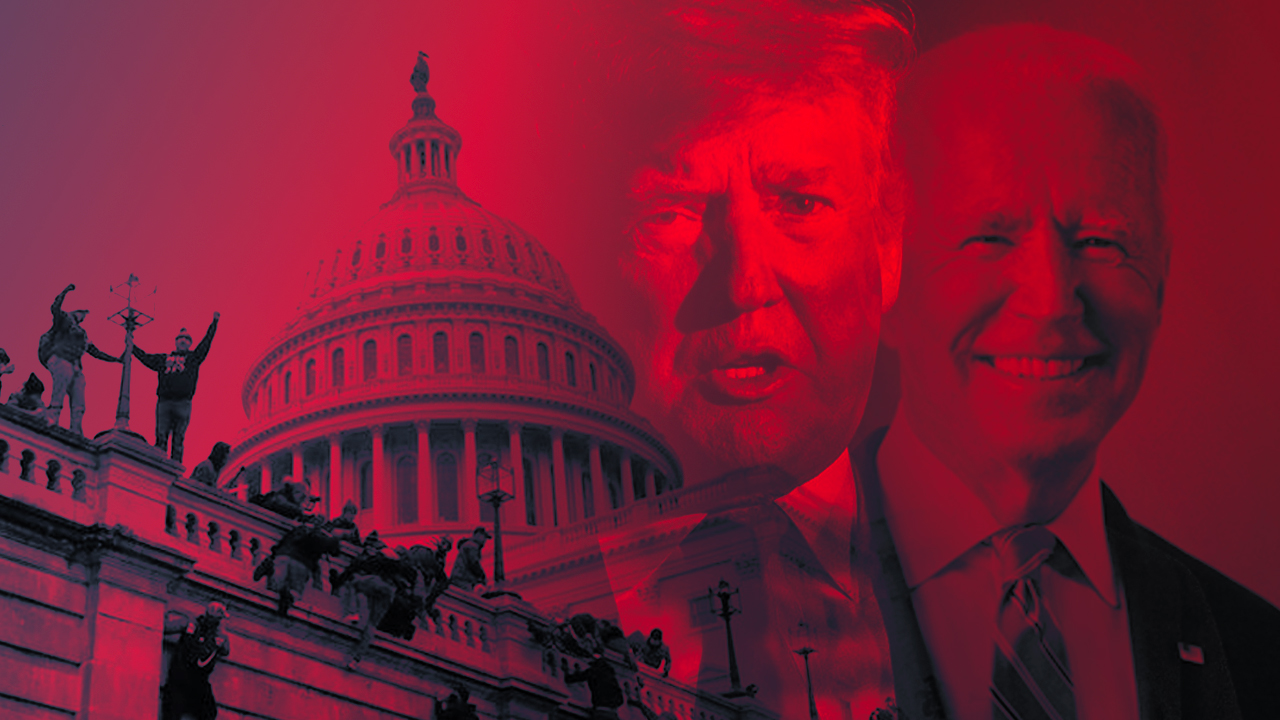
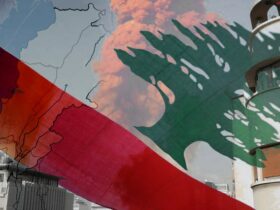
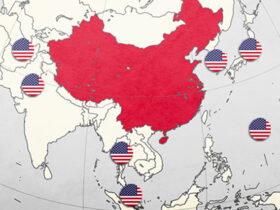
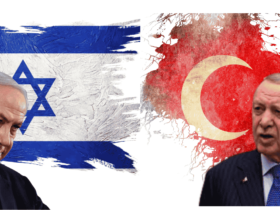

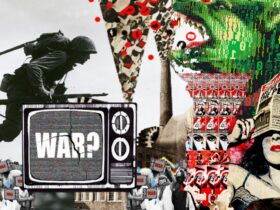

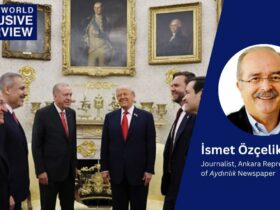
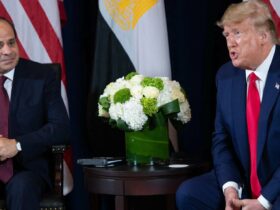

Leave a Reply